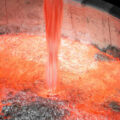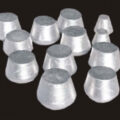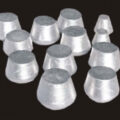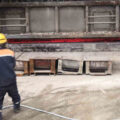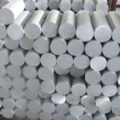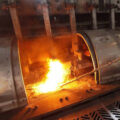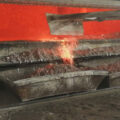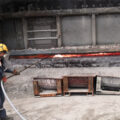With the development of various industries in the society, the demand for aluminum alloy has gradually increased, so the aluminium refining process is also particularly important.

Aluminium Refining Process
Loading. The pre-made alloy ingots and high-quality reheating materials, and then the fol alloy is added, and the alloy elements are added later.
Temperature control. Strictly control the temperature of aluminum alloy smelting. Only at the right temperature can high-quality alloy liquid be obtained to avoid overheating. If the temperature is too high, it will increase the oxidative burning loss of various elements in the alloy and cause changes in the chemical composition of the alloy. If the temperature is too low, the chemical composition of the alloy will be uneven, the oxidized inclusions and gases in the alloy will not be easily discharged, and the physical and chemical properties of the alloy will decrease, which will affect the casting performance.
Time control. Strictly control the smelting time and operate quickly to reduce alloy gas and oxidation inclusions, increase the burning loss of alloy elements, and affect the chemical composition of the alloy.
Refining operations. The main purpose of aluminum alloy refining is to remove gases and non-metallic inclusions in the melt, and uniform alloy composition. Aluminum refining process is an extremely important process in smelting. The refining agent should be selected correctly, the added amount should be controlled well, generally 0.5%-0.7% of the alloy mass) and the refining temperature should be controlled. The refining temperature is generally controlled at 700-7200C. During the refining process, use a bell jar to press the refining agent into about 2/3 of the melt surface in batches. Press into the orange A bottom rhyme, evenly and slowly rotate clockwise, the speed should be slow, the action should be stable, and avoid The molten metal is greatly agitated to prevent the increase in hydrogen content and the inclusion of inclusions.
Deteriorating treatment. The purpose of alloy modification is to refine the grains and improve the performance of castings. The modifier should be preheated first, and the control points are: ①The temperature of modification, generally not more than 7400C; ②The time of modification, generally 10min; ③The amount of the modifier, the amount of the two-color modifier is generally 1.0% of the alloy liquid mass- 1.2%; ④The operation method should be in place. After alloy refining, pouring should be completed as soon as possible. Sand casting should generally be controlled within 40 minutes, and metal mold casting should be controlled within 2 hours. Otherwise, re-refining and metamorphism must be carried out. When re-refining, the refining agent added is about 0.2% of the alloy mass.

